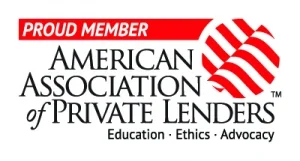Did you know over $3 trillion in commercial loans are outstanding in the U.S.? This shows the huge demand in the commercial lending market. Whether you’re starting out or already running a business, knowing how to qualify for a commercial loan is key. It can help you get the funding you need to grow and expand.
Understanding commercial loan requirements is tough. Lenders check your credit score, debt service coverage ratio, and loan-to-value ratio. They also need detailed financial documents like income tax returns and financial statements.
So, what’s needed to meet these requirements? From choosing the right commercial loan to knowing who to ask, this article will guide you. It’s all about making your small business financing journey easier.

Key Takeaways
- Understand different types of commercial loans like short-term working capital, lines of credit, and commercial real estate loans.
- Lenders evaluate the 3 C’s: credit, cash flow, and collateral; some also consider the 5 C’s.
- Personal credit scores of at least 680 and substantial financial documentation improve loan qualification chances.
- DSCR and LTV ratios are crucial metrics for commercial mortgage evaluation.
- SBA loans feature lower down payments and longer repayment terms, offering a viable alternative to traditional commercial loans.
Understanding Commercial Loans
Commercial loans help businesses grow by offering different types of loans. They are a partnership based on trust and growth. These loans are not just for emergencies but also for expanding and innovating.
What is a Commercial Loan?
A commercial loan is for business use, not personal. It helps with buying equipment, real estate, and more. Businesses of all sizes can use these loans to grow and improve.
Types of Commercial Loans
There are many types of commercial loans for different needs.
- Equipment Financing: For buying machinery or equipment.
- Commercial Real Estate Loans: For buying or refinancing commercial properties.
- Lines of Credit: Flexible funds for businesses to use as needed.
- Commercial Bridge Loans: Short-term loans for immediate expenses.
- Commercial Auto Loans: For buying vehicles for business use.
- Commercial Hard Money Loans: Loans based on property value, with LTV ratios of 60% to 80%.
Commercial loans can come from banks, credit unions, SBA lenders, and online lenders. Banks often require collateral. But, there are also alternative options for different financial situations.
When choosing a lender, consider cost, funding time, and qualifications. SBA 7(a) loans offer comprehensive support. Funding Circle and Bluevine provide online term loans and lines of credit. There’s a loan for almost any business need.
Key Factors to Consider
When you’re looking for commercial loans, it’s key to know what lenders look for. These factors help decide if you qualify for a loan. They also affect your chances of getting the money you need.
Credit Score and History
Your credit score and financial history are very important. Lenders check these to see if you’re reliable with money. A good credit score means you’ve paid bills on time, which lenders like.
But, a bad credit score can make it tough to get a loan. Some online lenders might still help you, even with a score as low as 550 to 625.
Role of Collateral
Collateral is also a big deal for lenders. They often ask for things like real estate or equipment as security. This makes them feel safer about lending you money.
By offering assets as collateral, you can make your loan application stronger. This is especially important for businesses in high-risk fields, where getting loans can be hard.
Debt Service Coverage Ratio (DSCR)
The debt service coverage ratio (DSCR) is another key thing lenders look at. It shows how well your business can handle its debt payments. A DSCR of 1.25 or more is usually good, meaning your business can cover its debts.
Some lenders might accept a DSCR between 1.1 and 1.4. This depends on how comfortable they are with your business’s financial health.
How to Qualify for a Commercial Loan
Knowing how to qualify for a commercial loan is key for businesses looking to get big funding. Several factors, like business loan eligibility and commercial loan requirements, play a big role in getting approved. Here, I’ll show you three important steps to boost your chances of getting a commercial loan.
Step 1: Evaluate Your Financial Health
First, it’s vital to check your financial health to see if you’re eligible for a loan. Before you talk to lenders, think about these things:
- Credit Score and History: Lenders want a high credit score. A good credit history shows you can pay back debts, making you more likely to get a $2 million commercial loan.
- Financial Stability: Having strong business finances, like steady revenues and profits, makes your loan application better. Lenders like borrowers who are low-risk and have stable income.
- Debt Repayment Track Record: Showing you’ve paid off debts on time is good for your financial management skills.
Step 2: Organize Necessary Documentation
Having the right documents is crucial when applying for a commercial loan. Make sure you have these ready:
- Income Statements: These show your business’s income and profits, giving lenders a clear view of your financial health.
- Balance Sheets: A balance sheet shows your business’s assets and debts, showing if you’re financially stable.
- Tax Returns: Lenders usually ask for three years of tax returns to see if your business is growing and consistent.
- Corporate Documents: You’ll need incorporation papers, partnership agreements, and other legal documents for lenders to check.
Step 3: Choose the Right Lender
Finding the right lender is more than just getting a loan. It’s about the terms and the quality of the relationship. Here’s what to think about:
- Lender’s Credit Requirements: Each lender has different credit standards. Some might be more flexible with lower credit scores but need more collateral.
- Underwriting Processes: Knowing how a lender works can tell you how strict they are and how long it takes to get approved.
- Alignment with Business Goals: Pick lenders that match your business goals and growth plans. A good relationship with your lender can help in the future.
By following these steps, you can improve your chances of getting a business loan. This will help you meet the requirements and get the funding you need for your business’s growth and success.
Preparing Your Business Plan
Getting a commercial loan is easier with a solid business plan. It’s like a roadmap that shows lenders your business’s potential. This makes your loan application more likely to succeed.
Importance of a Comprehensive Business Plan
A good business plan is key, not just a formality. It’s essential for business plan preparation and meeting commercial loan requirements. It tells your business story, analyzes the market, and shows financial plans.
Lenders need this because it shows how you’ll use the loan. It’s important to cover all parts of your business. This includes your model, team, and future growth.
Key Components of a Business Plan
A business plan needs several important parts:
- Executive Summary: Give a quick overview of your business, including the loan amount and how it will be used.
- Company Description: Share details about your business’s mission, vision, and the problems it solves.
- Market Analysis: Discuss your industry, target market, marketing strategy, and competitors.
- Organization and Management: Describe your business’s structure and your team’s qualifications.
- Product or Service Line: Explain what you offer, its pricing, and any intellectual property.
- Marketing and Sales Strategy: Share how you’ll get customers, your sales channels, and growth plans.
- Financial Projections: Include financial forecasts, historical data, and how the loan will be used. Cover three to five years, focusing on key metrics.
- Funding Request: Clearly state the loan amount, its purpose, and how it will help your business.
- Risk Management: Talk about potential risks, competition, and how you’ll handle them. This reassures lenders about your readiness for challenges.
By including these elements, you’ll be better prepared for a commercial loan. A detailed plan that shows your business’s past and future can greatly improve your loan chances.
Types of Commercial Loan Lenders
The commercial lending market has many loan providers. Each offers different criteria, interest rates, and loan structures. Knowing the types of lenders helps you find the right funding for your business.
Traditional Banks
Traditional banks are a common choice for commercial loans. They offer good interest rates but have strict rules. A bank loan usually needs a 25% down payment.
SBA 7(a) loans from banks require at least 10% down. Their interest rates are between 5% and 8.75%.
Private Lenders
Private lenders are a good option for those who can’t get bank loans. They have higher interest rates, from 10% to 20%. But, they offer flexible terms and quick approvals.
Private lenders also finance unusual projects. They are less strict about collateral and credit scores.
Alternative Lending Options
Alternative lending includes many non-bank options. They are great for quick funding or for businesses that don’t qualify for bank loans. Options include microloans, commercial bridge loans, inventory financing, and invoice financing.
Commercial bridge loans offer 6-12 months of financing. Their interest rates are higher than traditional mortgages. Invoice financing is approved based on the risk involved.
Commercial Real Estate Loans
Commercial real estate loans help businesses buy or fix up business properties. They are key for growth or investment in commercial spaces. Knowing the loan requirements and terms is crucial.
Eligibility Requirements
To get a commercial real estate loan, you need to meet certain criteria. You must have a credit score of at least 660 and a down payment of 25% of the property’s price. The business should also use a big part of the property.
Eligible properties include office buildings, retail spaces, and more. You also need a debt-service coverage ratio (DSCR) of at least 1.25. This ensures the business can pay the loan.
Appraisal and Loan-to-Value Ratio
An appraisal is key to getting a commercial real estate loan. It sets the property’s market value. This value is used to figure out the loan-to-value ratio (LTV).
Commercial loans usually have an LTV of 65% to 85%. This means the lender finances up to 85% of the property’s value. The borrower must pay the rest. The LTV ratio protects the lender from property value drops.
Understanding commercial real estate loans is important for businesses. Knowing the requirements and the loan-to-value ratio helps. Good preparation and accurate documents can improve your chances of getting a loan.
Assessing Cash Flow
Checking a business’s cash flow is key when looking for small business loans. Lenders look at cash flow to see if a business can handle costs and pay back debts. This helps them understand the company’s financial health and if it can meet loan payments.
To really understand cash flow, you need to look at different parts of the business’s financial reports. Important areas include:
- Operating cash flow: This shows money made from the business’s main activities. A positive number means the business can pay for everyday costs.
- Investing cash flow: This part shows money spent on or got from long-term investments, like buying equipment or property.
- Financing cash flow: This shows money from financing activities, like loans or investments from others.
Free cash flow is also important. It’s the net operating cash flow minus capital expenditures. A positive number means the business can cover its needs and investments. This is good news for lenders.
The 2023 Small Business Credit Survey found that 77% of businesses face higher supply costs. And 52% struggle to pay for expenses. But, 40% got funds that need to be paid back. This shows how crucial managing cash flow is.
New tech has changed how we check cash flow. Automation tools, using machine learning and APIs, are now the go-to for lenders. Tools like Ocrolus make cash flow analysis easier, spotting fraud and saving time and money. This helps businesses get more loans.
Knowing the operations/net sales ratio is also key for loans. This ratio shows how much cash a business makes per dollar of sales. It gives a clear view of its financial health.
In short, a detailed cash flow analysis is essential. It shows a business’s liquidity and financial health. It helps in making decisions, like getting working capital loans, by showing the company’s true financial state.
Asset-Based Lending
Asset-based lending lets businesses get loans using their assets. These can be inventory, equipment, or receivables. It’s a good option when other loans are hard to get. Knowing about it is key for businesses looking for alternative loans.
What is Asset-Based Lending?
Asset-based lending is for small to mid-sized businesses. It helps with short-term cash needs. Lenders use assets like inventory or accounts receivable as collateral.
Lenders can offer up to 85% of the value of liquid assets. Less liquid assets, like real estate, might get 50% of their value. This lets businesses use their assets to get the money they need.
Benefits and Risks
Asset-based lending has many benefits. The interest rates are lower because of the collateral. It’s good for businesses with a lot of physical assets.
Businesses like wine wholesalers or retailers with lots of inventory are good candidates. It’s also good for companies with cash flow that changes a lot.
But, there are risks too. If the business can’t pay back the loan, the lender might take the assets. Some assets, like special inventory, might not be good for collateral.
Businesses need to report on their collateral every month. This can be hard, but tools can make it easier. Companies with lots of assets and changing cash flow can still benefit from this type of loan.
It’s important to know both the good and bad sides of asset-based lending. By using their assets, businesses can get the money they need to grow.
Working Capital Loans
Working capital loans help businesses manage their daily needs. They cover expenses, handle seasonal changes, and keep cash flow steady. These loans are key for businesses to stay operational and meet immediate needs.
Companies with seasonal sales often use these loans. For example, manufacturers might need them during slow periods. The interest rates are higher because of the risk, especially for loans backed by assets.
There are different ways to get these loans. You can choose from term loans, lines of credit, invoice financing, or business credit cards. Businesses with good credit can get loans without collateral. Those with lower credit might need to secure the loan with assets.
Each lender has its own commercial loan requirements. Bank of America looks for two years in business, $100,000 to $250,000 in revenue, and a FICO score over 700. Wells Fargo wants a score of 680 for a line of credit. OnDeck needs a score of 625, one year in business, and $100,000 in revenue. National Funding requires six months in business and $250,000 in revenue for term loans.
Missing payments on a working capital loan can hurt your credit score. It’s tied to your personal credit. Having enough working capital is crucial for your business’s health. It affects cash flow, profits, and growth. Before applying, make sure you understand your business loan eligibility and financial situation.
Small Business Financing Options
Looking into financing options for your small business is key to making smart choices. I’ll explore SBA loan qualifications and other financing options for different business needs.
SBA Loan Qualifications
Small Business Administration (SBA) loans are great for small businesses because of their good terms and low down payments. These loans range from $500 to $5.5 million, covering many funding needs. The 7(a) loan is a popular choice, offering long-term financing for various business purposes.
Microloans are for small businesses and non-profit childcare centers up to $50,000. SBA-backed loans have competitive terms and fees, making them very appealing. They often have lower down payments, flexible overhead, and sometimes no collateral needed.
To qualify for SBA loans, you must meet size standards, show you can repay, have a solid business plan, and operate legally in the U.S. or its territories. SBA’s export loan programs help U.S. small businesses with exporting, addressing bank concerns.
Other Financing Solutions
There are other financing options besides SBA loans, like term loans, lines of credit, and equipment financing. Term loans are used for big investments like business growth or buying essential assets. Lines of credit are great for managing cash flow and unexpected costs, as you only pay interest on what you borrow.
Equipment financing is for buying equipment, often using the equipment as collateral. It’s important to watch out for predatory lending signs, like high-interest rates, high fees, and lenders pushing you to lie on paperwork.
By looking at these financing options, you can pick the best way to grow and support your business.
Conclusion
Getting a commercial loan is a detailed process. It requires careful planning and preparation to meet certain requirements. To qualify, you need to know about credit scores, collateral, and the Debt Service Coverage Ratio (DSCR).
A good credit score, solid collateral, and a favorable DSCR are key. They help make your business loan application stronger. This is important for getting approved.
Looking at different lenders is also crucial. You can choose from traditional banks, alternative lenders, or private lenders. Each has its own benefits and drawbacks.
For example, traditional banks might offer longer repayment terms. But, companies like Tidal Loans provide short-term loans with higher interest rates. Picking the right lender is important for your business’s needs.
Also, having all your financial documents ready is essential. This includes financial statements, tax returns, and business plans. Your financial health, like income and cash flow, also matters a lot.
For more information on commercial loans, including bridge loans, click here. Understanding these steps well can help you get a commercial loan. This can fuel your business growth and success in a competitive market.


